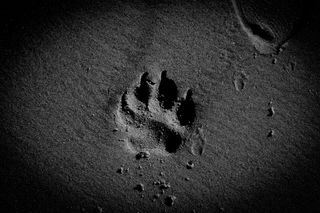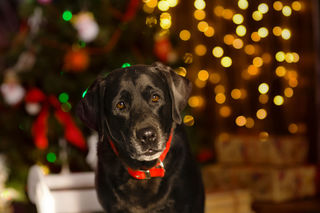Experiencing the death of a pet is a profound experience of hardship and loss. In our modern era of technology and what can feel like an increasingly fast living pace, grieving a companion animal can quickly be overlooked. Grief doesn’t “come in a box” and cannot be easily ignored. In fact, ignoring or repressing our grief can impact our psychological and physical health.
Below are a few guiding steps that may help directly after experiencing the loss of a pet. These steps are meant as a guide and portray what some experiences could look like. Most grieving individuals would benefit from a combination of these steps even before body care and support.
Step One: Allow yourself to respond to the grief you feel and breathe.
Your adrenaline has kicked into gear. Chances are, you’re experiencing high levels of varying degrees of emotion. Some people jump into “high gear” and avoid feelings of helplessness or hopelessness at all costs. People who express their grief in this way are commonly asking, “Are you sure they have passed?” and “Check again.” Or, they drive their beloved pet to the veterinary office just to make sure their pet has passed.

This stage is considered the stage of acute grieving, or the period directly after experiencing a loss. Your body cannot contain the emotional pain that it feels. Some people immediately cry, uncontrollably. Some people will immediately feel anger or look at “placing blame” upon someone else (in veterinary medicine, this can easily be projected at the veterinarian and his or her support staff). Some people tend to naturally withdraw and begin to bottle their emotional state.
It’s important to allow yourself initial shock reaction and expression of grief. If feelings of suicide emerge and you begin to feel unsafe, please know there is always help available and people that care at the National Suicide Hotline at 1-800-273-8255.
Step Two: Focus on what the immediate next step is, and don’t forget to keep breathing.
There are thousands of reasons why people experience the loss of their beloved companion animal and pet. Sometimes, the disease is at fault. Other times it can feel unjust and unexpected, such as their animal being hit by a car. All of these situations deserve their own supportive discussion, but everyone has to decide on the very next step.
If your pet has been experiencing decline, whether age or disease-related and you’ve been preparing for their passing, it can be helpful to have a “next steps” plan written down and posted somewhere that takes little effort to recall. In this acute phase, a lot of “easy” things to remember become much harder to recall, as our body is experiencing an intense emotional change and we struggle to grasp the new reality before us.
It’s important to recognize that your mind may want to jump forward with an immense and gut-wrenching “to-do” list and propel your anxieties forward. At this moment, only look at the immediate next step. Is it to call your veterinarian? Is it to get a blanket to cover your beloved pet? Do you just need more time to be with them before any action is taken? You get the right to decide. Breathe.
Step Three: Utilize support systems and call an understanding friend, if needed.
Grief can make us feel very, very alone. It is very true that grief is a highly personalized, unique experience for everyone. Even nuclear family members who spend every day together will grieve in very different ways. In fact, not every grief experience will look the same, they rarely do.

Integrate understanding friends or loved ones early on and notify them of your grief. Since grief is fluid, there are times that you may want to be alone with your emotions, and that’s ok. People may even say unhelpful things in an attempt to comfort you at some point such as, “we can get another one” or “at least they are in a better place.” Sometimes even our closest friends can feel helpless at our grief and at times, suffering, and will try to comfort us in any way that they can.
In the acute phase, the most helpful thing is a calm presence and support. Even if there’s nothing more to be said, knowing that you can express your grief and are supported in your pain can make a world of difference.
If there is an unhealthy support system, or living location that limits access to understanding support, there are online communities such as Pet Loss Grief Support Community at Rainbow Bridge or the Pet Loss Grief Support Message Board.
Step Four: When you’re ready, take that next action step.
It’s crucially important that we allow the feelings and emotions that arise within this acute phase of grief and understand that there is no linear timeline within the experience. Acute feelings of grief are powerful and important, as it already starts the process of healing after experiencing a loss.
At this moment, it can be excruciatingly hard to pick up the phone and notify your veterinarian of your pet’s passing. It can be even harder to transport their body yourself if needed. Some people find hope in remembering that we can give back to our pet’s end of life in this small way, to serve them through this moment in love and respect, even though it is hard.
Our pets provide us with so much unconditional love and companionship, and we immediately recognize the pain and absence of it upon their passing. Some people say grief is the pain of loving so much.












 Some families euthanize their family pet with the best intention when the child is away at school, to have the child return home to find their pet is gone. Doing so can actually have the exact opposite effect from the one we intended. Goodbyes are extremely important for every member of the family, especially children.
Some families euthanize their family pet with the best intention when the child is away at school, to have the child return home to find their pet is gone. Doing so can actually have the exact opposite effect from the one we intended. Goodbyes are extremely important for every member of the family, especially children.



